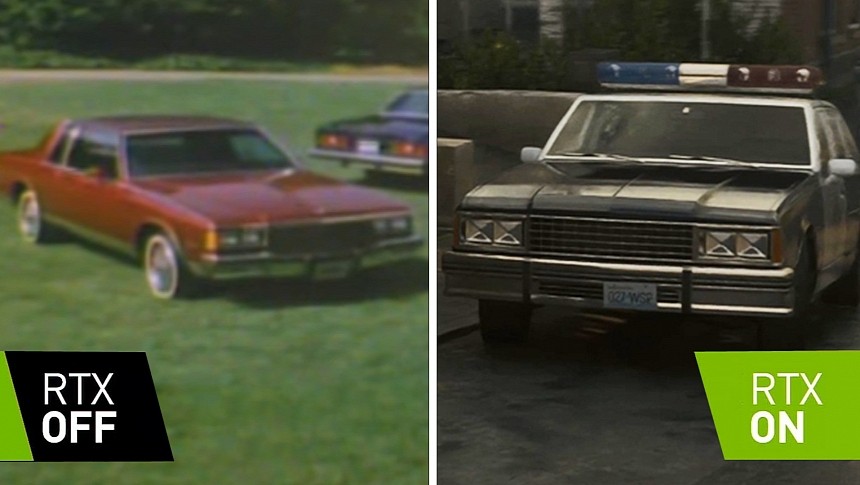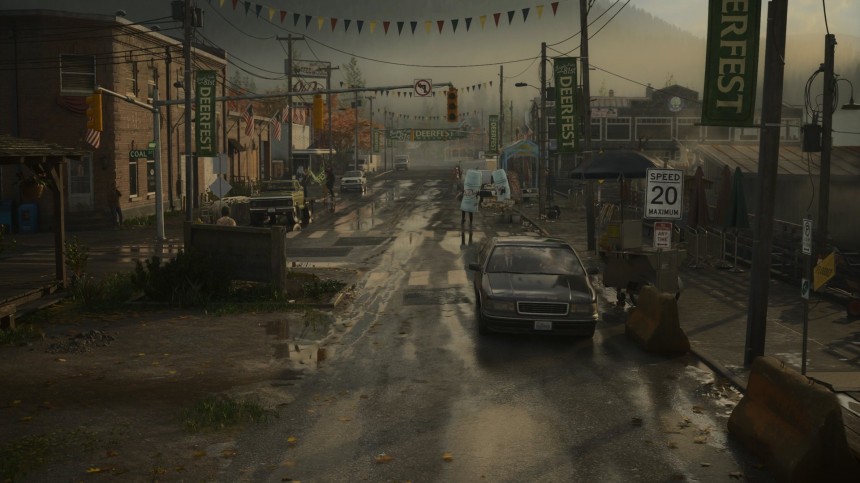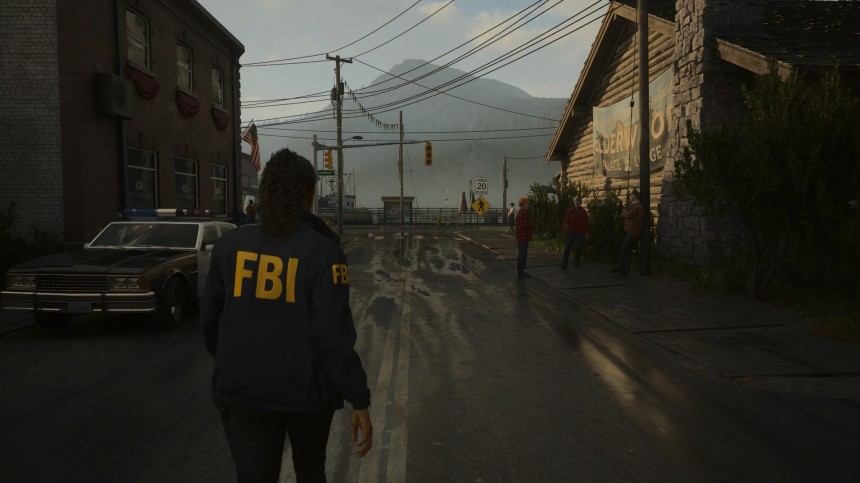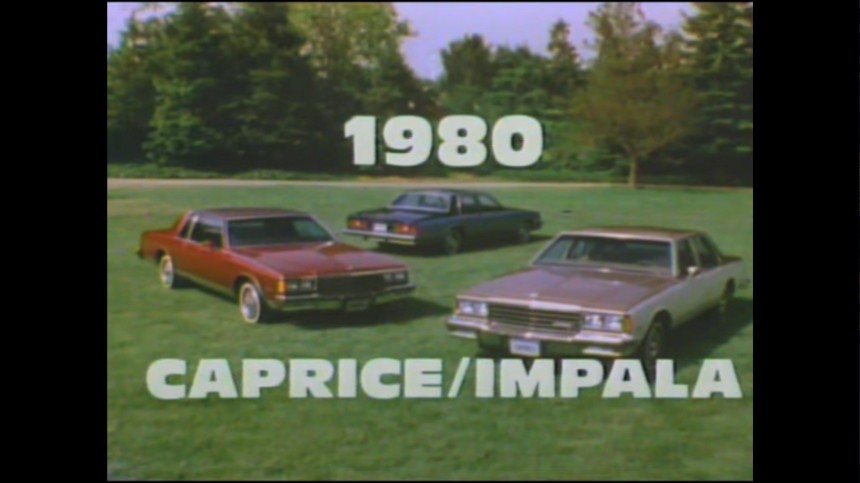Alan Wake II, by Remedy Entertainment, has the most nominations at the 2023 Game Awards, with eight categories, equaled only by the revolutionary Baldur's Gate III. The game is fantastic, but it's not for everyone. However, if you're really into detective thrillers like Hannibal, Twin Peaks, Mindhunters, and True Detective, this could be perfect for you.
Alan Wake II is among the top three most photorealistic video games ever made. Granted, it's not rendering a vast open world like in Red Dead Redemption 2, but when you switch everything to 4K Ultra Settings and turn on Ray Tracing with all the bells and whistles, you get one of the most visually advanced gaming experiences you have ever seen. Especially if it's on an OLED TV with HDR on.
Ray Tracing on Ultra 4K settings is a beast to pull off, even with an Intel i9-13900k processor and an Nvidia RTX 4080. I barely get 22 fps on native resolution with that rig. But after I set DLSS 2 to Balanced with Frame Generation On, to quote from Alladin, it's "a whole new world" with everything cranked up to 11.
Like its long-forgotten graphical boundary-shattering predecessors, Doom 3 and Crysis, Alan Wake II is a game beyond what modern hardware can pull off without software upscaling techniques. And that means Nvidia tech only because AMD FSR is way behind its competitor.
That's completely fine, though, for it's a window into what the visual standard of AAA ("Triple A" = big budget) games will look like 5-10 years from now.
So when you couple that level of graphical fidelity with vehicles, you get the most amazing-looking rides featured in a video game. I'm talking aside from the fully rendered trailer-like videos you see in The Crew Motorfest.
Over at IGCD.net, the Internet Game Cars Database, people have spotted multiple American nameplates in Alan Wake II. In fact, they're all Ford and Chevy models blindingly glistening with glorious ray-traced lighting to create a superb '90s crime-mystery atmosphere. In other words, it's incredibly immersive.
Among the most popular models you'll see in AW2 is the Chevy Caprice. The first time you lay eyes upon it, is when your character, Saga, an FBI agent, is behind the wheel of a typical 1996 model "undercover cop" car. A while after the game's first section, you reach the town where you see a Caprice from 1980.
If you walk around town, you'll also see a lot of police vehicles from 1980. But it doesn't stop here. Later in the game, you'll see a classic 1996 Caprice New York cab and another 1996 police car, this time wearing the NYPD colors and lights. There's also a 1984 Chevrolet Citation and a 1991 Chevrolet S-10 Blazer.
As far as the Fords are concerned, there are two 1970 Ford F-100 trucks, a bunch of E-series, and a Country Squire. There are also two bikes, but they're unidentified so far. Too bad, because they look pretty bada*s.
Pair the almost real-life graphics with the vehicles and the '90s thriller murder-mystery vibe, and you have yourself an unbeatable formula that would make even famous movie director David Lynch skip a heartbeat.
The 1980 Caprice wasn't too shabby, offering power steering, brakes, and an automatic transmission system as standard features. It came with a 3.8-liter (228-ci) V6 engine, though not in California. There, it came with a 231-cubic-inch engine at extra cost.
However, if this wasn't enough to float your boat, there were also V8 options, provided your wallet could have handled the price. In the ads, Chevrolet bragged that these V8 Caprice and Impala models could tow trailers up to 5,500 lbs. or 2,495 kg.
So, what were these magical V8 powerplants? Well, outside California, they had a 4.4-liter or 267-ci capacity. However, if you lived in California, you could have opted for the 5.0-liter (305 cubic-inch) higher output four-barrel carburetor version.
The station wagons were nothing to scoff at either, with a top-of-the-line exclusive 5.7-liter 350-ci V8 engine.
An exciting story about the 1996 Caprice cop cars is that this was the last year Chevy made these models for law enforcement. After this shift, many departments started adopting the famous Crown Vic, or Ford Crown Victoria. To this day, the 4.6-liter V8 Crown Vic Interceptor unit with rear-wheel drive is one of the most revered models in American culture.
A little fun fact about the Caprice: after they stopped making it in the US in '96, the production was still carrying on in Australia, down under. It only returned to the American motherland in 2011 on the Zeta platform used between 2010-2015 for the Chevy Camaro, VF Commodore, and Chevrolet SS.
The Caprice soon donned the police mantle again as the PPV model, armed with a 3.6-liter V6 that could deliver around 300 hp and got to 60 in about 7.84 seconds. A 6.0-liter V8 version also pumped those rookie numbers up to 355 horsepower. It's rated as the 10th fastest police car, clocking in at 156 mph or 251 kph, reaching 60 mph in 6.17 seconds.
The sad part is that we can't drive any of these vehicles like in GTA, but at least we get to see them in all their ray-traced splendor.
Ray Tracing on Ultra 4K settings is a beast to pull off, even with an Intel i9-13900k processor and an Nvidia RTX 4080. I barely get 22 fps on native resolution with that rig. But after I set DLSS 2 to Balanced with Frame Generation On, to quote from Alladin, it's "a whole new world" with everything cranked up to 11.
Like its long-forgotten graphical boundary-shattering predecessors, Doom 3 and Crysis, Alan Wake II is a game beyond what modern hardware can pull off without software upscaling techniques. And that means Nvidia tech only because AMD FSR is way behind its competitor.
That's completely fine, though, for it's a window into what the visual standard of AAA ("Triple A" = big budget) games will look like 5-10 years from now.
Over at IGCD.net, the Internet Game Cars Database, people have spotted multiple American nameplates in Alan Wake II. In fact, they're all Ford and Chevy models blindingly glistening with glorious ray-traced lighting to create a superb '90s crime-mystery atmosphere. In other words, it's incredibly immersive.
Among the most popular models you'll see in AW2 is the Chevy Caprice. The first time you lay eyes upon it, is when your character, Saga, an FBI agent, is behind the wheel of a typical 1996 model "undercover cop" car. A while after the game's first section, you reach the town where you see a Caprice from 1980.
If you walk around town, you'll also see a lot of police vehicles from 1980. But it doesn't stop here. Later in the game, you'll see a classic 1996 Caprice New York cab and another 1996 police car, this time wearing the NYPD colors and lights. There's also a 1984 Chevrolet Citation and a 1991 Chevrolet S-10 Blazer.
Pair the almost real-life graphics with the vehicles and the '90s thriller murder-mystery vibe, and you have yourself an unbeatable formula that would make even famous movie director David Lynch skip a heartbeat.
The 1980 Caprice wasn't too shabby, offering power steering, brakes, and an automatic transmission system as standard features. It came with a 3.8-liter (228-ci) V6 engine, though not in California. There, it came with a 231-cubic-inch engine at extra cost.
However, if this wasn't enough to float your boat, there were also V8 options, provided your wallet could have handled the price. In the ads, Chevrolet bragged that these V8 Caprice and Impala models could tow trailers up to 5,500 lbs. or 2,495 kg.
So, what were these magical V8 powerplants? Well, outside California, they had a 4.4-liter or 267-ci capacity. However, if you lived in California, you could have opted for the 5.0-liter (305 cubic-inch) higher output four-barrel carburetor version.
An exciting story about the 1996 Caprice cop cars is that this was the last year Chevy made these models for law enforcement. After this shift, many departments started adopting the famous Crown Vic, or Ford Crown Victoria. To this day, the 4.6-liter V8 Crown Vic Interceptor unit with rear-wheel drive is one of the most revered models in American culture.
A little fun fact about the Caprice: after they stopped making it in the US in '96, the production was still carrying on in Australia, down under. It only returned to the American motherland in 2011 on the Zeta platform used between 2010-2015 for the Chevy Camaro, VF Commodore, and Chevrolet SS.
The Caprice soon donned the police mantle again as the PPV model, armed with a 3.6-liter V6 that could deliver around 300 hp and got to 60 in about 7.84 seconds. A 6.0-liter V8 version also pumped those rookie numbers up to 355 horsepower. It's rated as the 10th fastest police car, clocking in at 156 mph or 251 kph, reaching 60 mph in 6.17 seconds.
The sad part is that we can't drive any of these vehicles like in GTA, but at least we get to see them in all their ray-traced splendor.

































